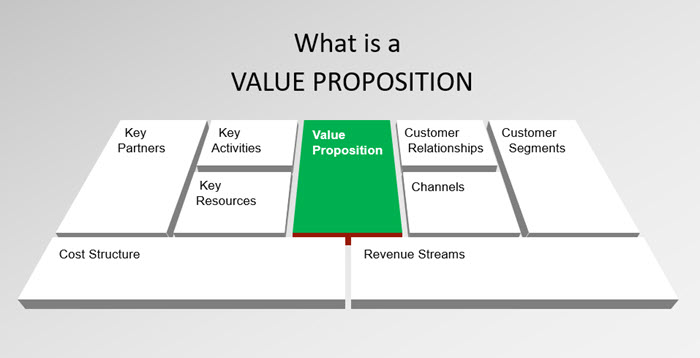
Regardless of your industry, what you do, or your business type, two things are probably true: 1) you rely on customers and clients for success, and 2) you have competitors. As such, how you market your business is a critical part of business longevity, reputation, and influence.
This is why value proposition becomes so important. Indeed, a value proposition is arguably the most important aspect of your overarching company message, and potentially the most critical element of your marketing strategy.
What Is a Value Proposition?
A value proposition is a statement that positions your company within your industry, and tells customers why they should invest in your product rather than your competitors’. Value propositions do not beat around the bush - the message and the intent of a value proposition are clear and obvious. All companies use value propositions to hook customers and reel them in. When companies fail to take the time to develop a value proposition, they risk missing the mark with regard to defining their target audience and reaching their target customer successfully. Value propositions are not slogans; they are an explanation of how your company is going to solve the customer’s problem and what benefits customers can expect. As such, value propositions can be formed using many different elements, not a single sentence alone (i.e., headlines, subtext, visuals, and more can also be used to make a value proposition clear to a customer).
Value propositions aren’t just important because they give potential customers a persuasive reason to choose your company, but because they are the first things that web users see when they visit your company’s page (if done well). A strong value proposition that is well-designed and well-placed on your website can influence and boost conversion rates and sales. As explained by HubSpot, a poor value proposition -- or a great one -- could be the difference between losing a sale or closing it. The same source also reports that the majority -- 69 percent -- of B2B firms have established value propositions, yet 54 percent of companies do nothing to optimize their value propositions.
Here are some tips for developing a compelling value proposition, as well as some great value proposition examples:
How to Develop a Great Value Proposition for Your Business
Developing a great value proposition starts by first identifying and defining a number of elements related to your business. This process includes:
- Defining your target audience/buyer
- Identifying the problem/need of your target buyer
- Stating how your company and product/service solves that problem
- Identifying what sets you apart from your competitors, i.e. why you are the better choice
To be successful with the above process, you should look at your current customer base and choose a specific demographic to target, as recommended by Inc.com. Once you have identified your target buyer, the most important part of developing a value proposition is to understand their problem, how your product solves it, and what benefits your product or service gives customers. To do this, you should make a detailed list of all benefits your product offers, and identify the value that your product brings to your customer.
Don’t stop there - you also need to identify what sets your company apart from the competition. Is your product more effective? Do you deliver results faster? Is your product easier to use? Less expensive? Why should your target customer choose you? “We have the best quality” won’t be enough.
Create Your Value Proposition
- Great Examples to Take Inspiration From
There are myriad businesses which have done a fantastic job at creating value propositions that clearly state the precise benefits a customer is going to derive from choosing them. Consider this list of “7 of the Best Value Propositions We’ve Ever Seen,” or “31 Value Propositions You Wish You Had.” Some companies, and their corresponding value propositions that made the list, include:
- Apple. Value proposition: ”The experience IS the product.“
Their value proposition is made evident by statements like, “Why there’s nothing quite like the iPhone,” and “That, above all, a phone should be absolutely simple, beautiful, and magical to use,” and a presentation of unique features, such as Touch ID.
- Lyft. Value proposition: “Rides in minutes, whenever you need one.”
Lyft doesn’t leave you hanging in making it clear why you should choose their company - rides are available in minutes. This message is developed not only by this very direct statement, but also by the step-by-step images of the Lyft experience, and a bulleted list of benefits (happy drivers, happy riders, and “serious about safety”).
- Digit. Value proposition: “You can save money without even trying.”
For most people, it doesn’t get much better than that - who wouldn’t want to have more money in their pocket without even thinking about it? Digit perpetuates this message by highlighting that everything about its use is automated, so users don’t have to do anything to benefit, and by including a very succinct, to-the-point video on their homepage.
What do these value propositions have in common? If you are working on developing your own value proposition, a key take-away from the above examples is that in all cases, the value propositions are very clear and easily identifiable. The messages are also clear about how the customer benefits and exactly what they can expect. Perhaps most importantly, the value propositions are all obvious from the first few seconds that customers visit companies’ web pages.
Stand Out from Your Competitors and Drive Sales
If you want to make more of a mark on your industry and be a force to be reckoned with, you need a strong value proposition. For inspiration and help, don’t hesitate to contact me here.
